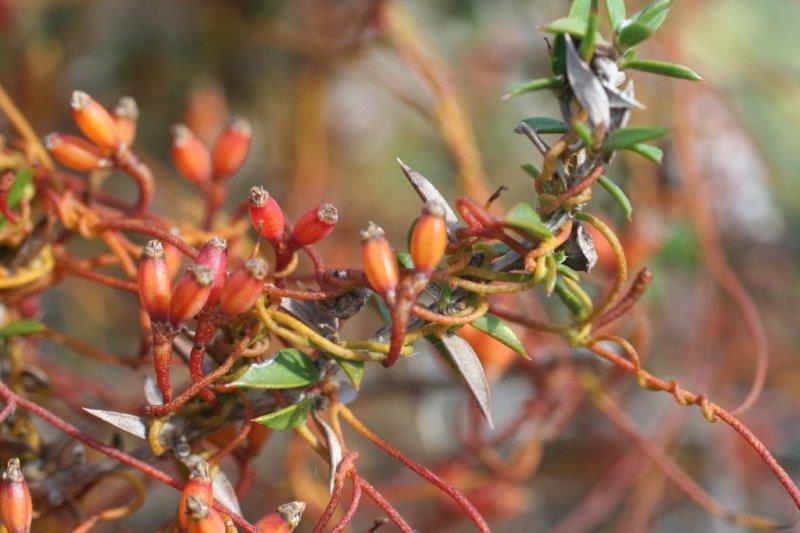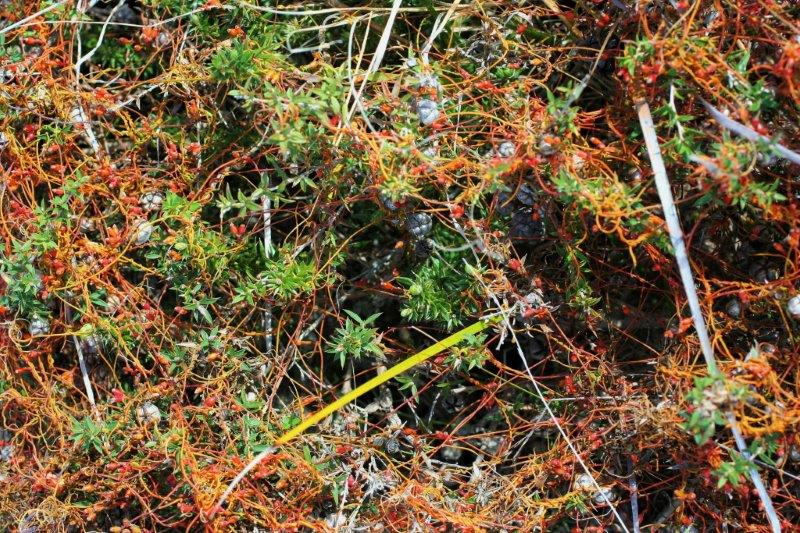I found this plant!


Slender Dodder-laurel
Cassytha glabella forma glabella


This almost leafless and parasitic, perennial twiner can be found growing on plants along the clifftops in the coastal heaths toward Bells Beach Recreational Surfing Reserve and further south west. Being a parasitic plant it requires no root system; instead it draws the majority of its nutrients via its attachments to the host plant. This is achieved through a series of clasping mechanisms called haustoria which pierce the cambium tissue of the host plant allowing it to withdraw nutrients for its own needs.
Leaves are present but are tiny and scale-like.
The fruits are orange-red in colour and appear from October onwards.
Plant form
Creeper
Flowering season
Spring
Flower colour
White
Leaf colour
Both sides of the leaf are one colour
Required Sunlight
Semi-shade,
Full Sun
Other Features
Berries